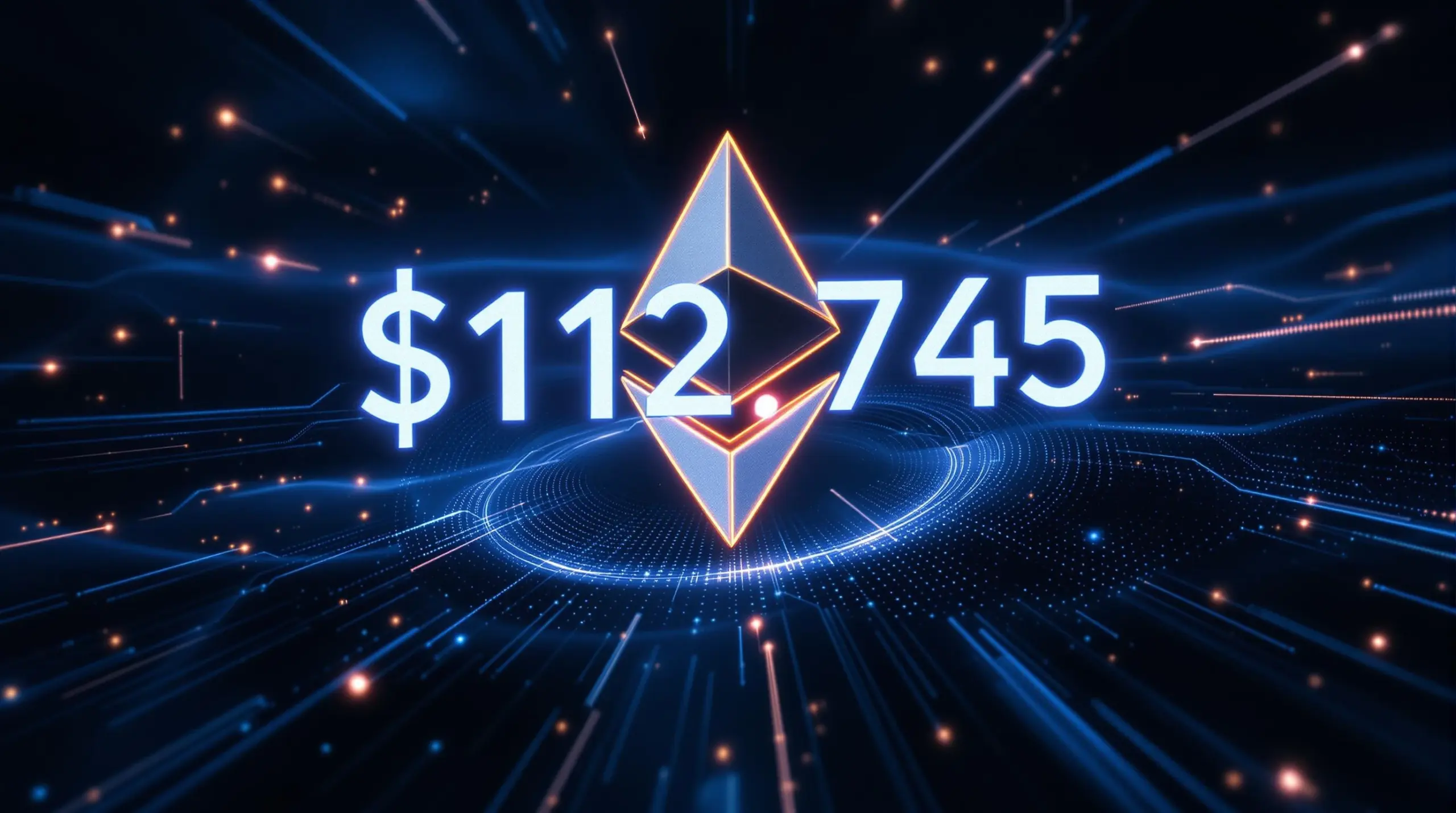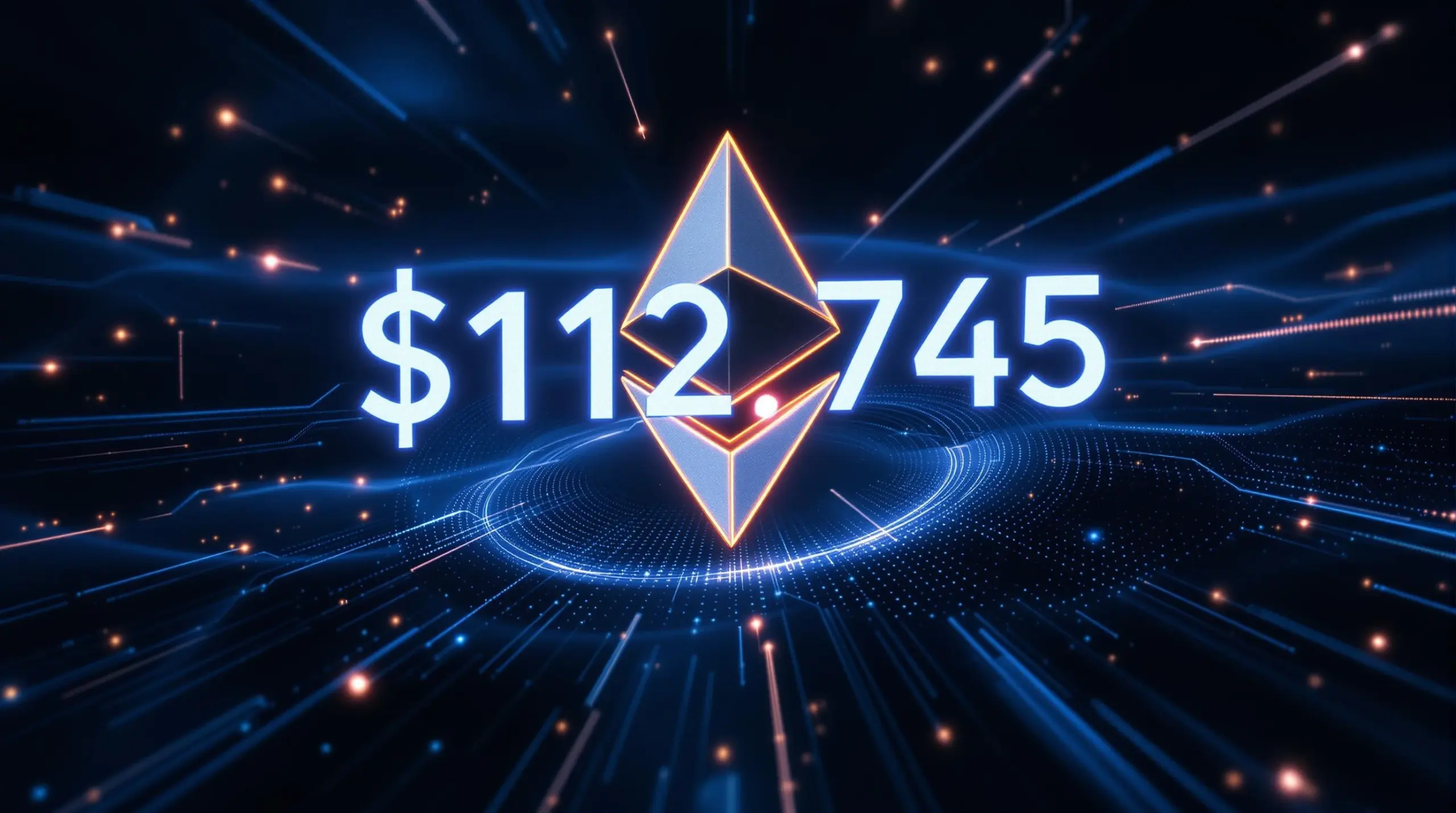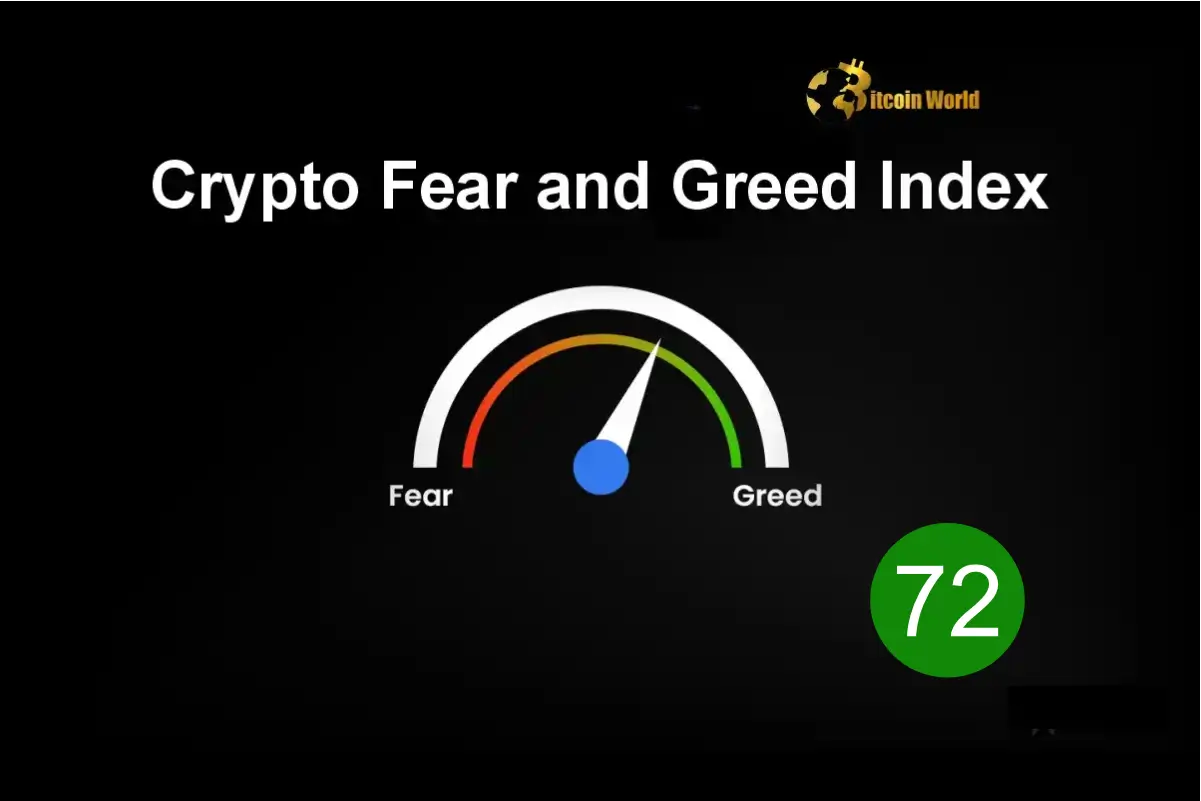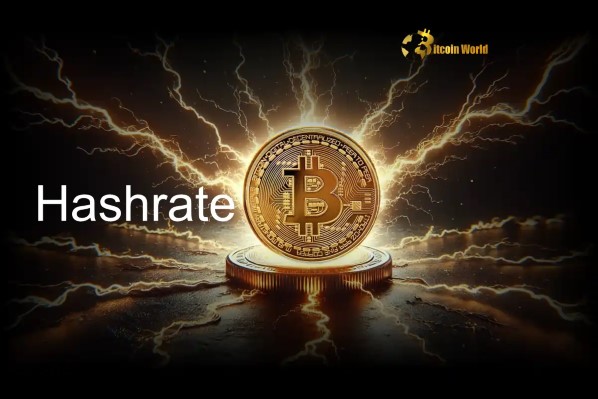BitcoinWorld

Astronomical Ethereum Transaction Fees: One ETH Transfer Costs a Staggering $112,745
Imagine sending money and being charged a fee that could buy you a luxury car. This isn’t a hypothetical nightmare; it recently became a reality for a user on the Ethereum network. A single Ethereum transaction fees soared to an unbelievable 31 ETH, translating to an astronomical $112,745 at the time. This staggering event, highlighted by Whale Alert, sent ripples across the crypto community, once again bringing the spotlight onto the persistent issue of high ETH gas fees.
What Happened? The Astronomical Fee Unpacked
On a seemingly ordinary day, the crypto tracking service Whale Alert, known for reporting significant blockchain movements, posted an alert on X (formerly Twitter) that instantly grabbed attention. Their report detailed a single transaction on the Ethereum blockchain that incurred an astonishing fee of 31 ETH. At the valuation during the time of the transaction, this equated to approximately $112,745. To put this into perspective, for a standard bank transfer, you might pay a few dollars, or even nothing. On the Ethereum blockchain, however, the costs can sometimes escalate dramatically, reaching levels that seem utterly disproportionate to the service rendered.
This particular incident wasn’t an isolated case of a high fee, but its sheer magnitude made it stand out. While Ethereum has seen its fair share of elevated gas prices during periods of network congestion, a fee of this size for a single transaction is rare and prompts a deeper look into the underlying mechanisms of Ethereum transaction fees and the broader implications for the decentralized ecosystem.
Why Do ETH Gas Fees Skyrocket? Understanding the Mechanics
To understand why a single transaction could cost so much, we need to delve into the mechanics of ETH gas fees. Gas is the unit that measures the computational effort required to execute operations on the Ethereum network. Think of it like fuel for your car; you need gas to drive, and you need gas to make a transaction on Ethereum. The price of gas is denominated in Gwei, which is a tiny fraction of an Ether (1 Gwei = 0.000000001 ETH).
The total fee for a transaction is calculated by multiplying the gas limit (the maximum amount of gas a user is willing to spend) by the gas price (the price per unit of gas). Miners (now validators on the Proof-of-Stake network) prioritize transactions that offer higher gas prices. This creates a dynamic marketplace:
- Network Congestion: When the Ethereum network is busy with many users trying to process transactions simultaneously, the demand for block space increases. Users must offer higher gas prices to get their transactions included in the next block.
- Complex Operations: More complex operations, such as interacting with smart contracts for DeFi protocols or NFTs, require more computational effort (higher gas) than simple ETH transfers.
- Supply and Demand: The limited block space on Ethereum creates a bidding war. If a whale (a large holder of cryptocurrency) needs their transaction processed urgently, they might set an exceptionally high gas price to ensure immediate inclusion, outbidding others.
In the case of the $112,745 fee, it’s highly probable that the sender intentionally set an extremely high gas price to ensure their transaction was processed immediately, or perhaps there was an error in setting the gas price. While the exact reason for this specific whale’s decision remains speculative, it perfectly illustrates the volatility and potential cost extremes within the Ethereum network.
The Ripple Effect: How High Crypto Transaction Costs Impact the Ecosystem
While an individual whale might absorb such a high fee, the broader implications of high crypto transaction costs are significant for the entire decentralized ecosystem. These elevated fees can:
- Hinder User Adoption: For everyday users, especially those new to crypto, paying exorbitant fees for simple transfers or interactions is a major deterrent. It makes the network less accessible and less attractive compared to traditional financial systems or even other blockchain networks with lower fees.
- Impact DeFi and DApp Usability: Decentralized finance (DeFi) applications and other decentralized applications (dApps) rely on frequent, low-cost interactions. High gas fees can make these applications prohibitively expensive to use, especially for smaller transactions or for users with limited capital. This limits innovation and utility within the ecosystem.
- Centralization Concerns: If only large players or whales can afford to transact during peak times, it can inadvertently lead to a form of centralization, where smaller participants are priced out. This goes against the core ethos of decentralization and accessibility that blockchain technology aims to promote.
- Push Users to Competing Chains: As fees on Ethereum rise, users and developers may seek out alternative blockchain networks that offer lower transaction costs and faster processing times, potentially fragmenting the ecosystem and slowing down Ethereum’s growth.
The incident serves as a stark reminder that while Ethereum is a leading smart contract platform, its current state of Ethereum transaction fees poses a significant challenge that needs continuous addressing for mass adoption.
Building for the Future: Tackling Blockchain Scalability on the Ethereum Network
The issue of high fees is intrinsically linked to blockchain scalability. Scalability refers to a blockchain’s ability to handle a growing number of transactions per second. Ethereum, in its current form, has limitations on its transaction throughput, which leads to congestion when demand is high. Fortunately, the Ethereum community is actively working on several solutions to address this:
- Layer 2 (L2) Scaling Solutions: These are separate blockchains or protocols built on top of the main Ethereum chain (Layer 1). They process transactions off-chain and then periodically batch and submit them to the mainnet, significantly reducing fees and increasing throughput. Popular L2s include:
- Optimistic Rollups (e.g., Arbitrum, Optimism): Assume transactions are valid by default and only run computations if a challenge is made.
- ZK-Rollups (e.g., zkSync, StarkNet): Use cryptographic proofs to verify the validity of transactions off-chain, offering stronger security guarantees.
- Ethereum 2.0 (The Merge and Sharding): The long-term vision for Ethereum involves a complete overhaul of its architecture. The Merge, which transitioned Ethereum from Proof-of-Work to Proof-of-Stake, laid the groundwork. The next major upgrade, ‘sharding,’ aims to split the Ethereum blockchain into multiple smaller chains (shards) that can process transactions in parallel. This would dramatically increase the network’s capacity and reduce fees.
These developments are crucial for ensuring the long-term viability and competitiveness of the Ethereum network. They aim to make the network more efficient, cost-effective, and accessible for everyone, from individual users to large-scale decentralized applications.
Navigating High Fees: Practical Strategies for Users Facing High Ethereum Transaction Fees
While the network works on long-term solutions, what can an average user do to mitigate the impact of high Ethereum transaction fees? Here are some actionable insights:
- Monitor Gas Prices: Use gas tracking websites (e.g., Etherscan Gas Tracker, GasNow) to see real-time gas prices. Fees are often lower during off-peak hours (e.g., weekends, late nights/early mornings UTC) when network activity is reduced.
- Utilize Layer 2 Solutions: If the dApp or service you’re using supports a Layer 2 network, consider bridging your assets to an L2 like Arbitrum, Optimism, or Polygon. Transactions on these networks are significantly cheaper and faster.
- Batch Transactions: If you have multiple transactions to make, try to bundle them if possible, or wait until gas prices are lower to execute them together.
- Set Custom Gas Limits (with Caution): Advanced users can set custom gas limits, but this should be done with extreme caution. Setting it too low might cause your transaction to fail, and you’ll still lose the gas fee. Setting it too high might result in overpaying.
- Consider Alternative Chains for Small Transfers: For very small transfers or simple token swaps, if the recipient or platform supports it, consider using other blockchains with inherently lower fees, though this comes with its own set of considerations regarding security and decentralization.
By being strategic and informed, users can significantly reduce their crypto transaction costs and make their experience on the Ethereum network more economical.
The Road Ahead: What’s Next for Ethereum and its Transaction Fees?
The $112,745 transaction fee serves as a potent reminder of the challenges that come with a highly demanded, yet currently capacity-limited, blockchain. While such extreme fees are outliers, the general trend of high ETH gas fees during peak usage periods remains a significant hurdle for mainstream adoption and continuous innovation within the decentralized space.
The ongoing development of Ethereum 2.0 and the proliferation of Layer 2 solutions offer a hopeful path forward. As these technologies mature and become more widely adopted, we can expect to see a substantial reduction in transaction costs and a significant increase in the network’s overall throughput. The goal is to make the Ethereum network a truly global, scalable, and affordable platform for all types of decentralized applications and financial services.
In conclusion, while the recent astronomical fee highlights a current limitation, it also underscores the immense demand for Ethereum’s block space and the vibrant activity within its ecosystem. The continuous efforts towards blockchain scalability through Layer 2s and future Ethereum upgrades are vital steps towards building a more accessible and efficient decentralized future for everyone.
Frequently Asked Questions (FAQs)
1. What are Ethereum gas fees?
Ethereum gas fees are the costs users pay to execute transactions or smart contract operations on the Ethereum network. They compensate the network’s validators for the computational resources required to process and secure these operations.
2. Why do ETH gas fees become so high?
ETH gas fees become high primarily due to network congestion. When many users try to process transactions simultaneously, the demand for limited block space increases, leading to a bidding war where users offer higher gas prices to ensure their transactions are prioritized by validators.
3. How can users reduce their Ethereum transaction costs?
Users can reduce costs by monitoring gas prices and transacting during off-peak hours, utilizing Layer 2 scaling solutions (like Arbitrum or Optimism), or batching multiple transactions when possible. For small transfers, considering alternative chains might also be an option.
4. What are Layer 2 solutions, and how do they help with blockchain scalability?
Layer 2 solutions are protocols built on top of the main Ethereum blockchain (Layer 1). They process transactions off-chain, bundle them, and then submit a single proof to the mainnet. This significantly increases transaction throughput and reduces fees, thereby improving blockchain scalability.
5. Was the $112,745 fee an error?
While it’s difficult to definitively say without knowing the sender’s intent, such exceptionally high fees are usually a result of either an intentional overpayment to ensure immediate transaction processing (common for very time-sensitive or critical transactions by whales) or a user error in setting an excessively high gas price limit.
Did you find this article insightful? Share your thoughts on high Ethereum transaction fees and blockchain scalability challenges with your friends and followers on social media! Let’s continue the conversation about the future of decentralized finance.
To learn more about the latest crypto market trends, explore our article on key developments shaping Ethereum price action.
This post Astronomical Ethereum Transaction Fees: One ETH Transfer Costs a Staggering $112,745 first appeared on BitcoinWorld and is written by Editorial Team





